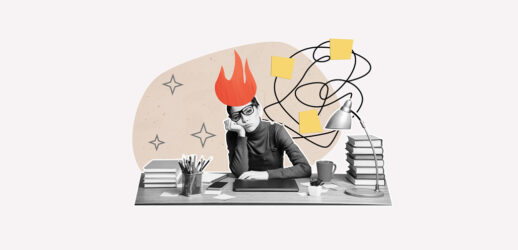Meeting professionals are tasked with making sure the audio of presentations is clear, that there’s no feedback and that it is at a comfortable volume—but what about the attendees who live in silence?
Rather than relying on microphones and speakers to receive a message, the deaf and hard of hearing depend on the talented hands of American Sign Language (ASL) interpreters. Not everyone is as fortunate as actress Marlee Matlin, who has a translator shadow her everywhere she goes. Most have to navigate the hearing world alone, and at meetings, planners and other organizers are responsible for making appropriate arrangements.
The fancy fingers of these highly trained professionals share the stage with the biggest stars and often steal the show from the main act. While the deaf cannot hear, they can feel music through its vibrations and enjoy attending concerts and festivals just as much as the hearing population. Signing song lyrics is a performance art that takes on a life of its own.
Interpreter Holly Maniatty has made a name for herself as the go-to person who offers ASL services at hip-hop concerts and festivals. According to USA Today, she is typically hired by the disability department to provide equal access to deaf music lovers. Concert-goers can request to have an interpreter present.
“As an interpreter, you’re only as successful as the last song you interpreted—or the 90 seconds someone caught and made viral—so I’ve been very fortunate that they were successful moments,” Maniatty told the newspaper. “If they are dropping with the beat and the crowd, bumpin’ to a particular rhyme, etc., [then] mission accomplished! Music is such a personal experience—to be a part of that for an audience is truly a privilege.”
In a video that went viral earlier this month, Minnie Mouse, Mickey Mouse and Pluto made a little fan’s dreams come true when they communicated to him by signing, “Nice to meet you.” This was part of a trip put together by Olive Crest, an organization that treats and educates at-risk youth. “The child was ecstatic after meeting the characters because he didn’t know they would speak ‘his language,’” a rep for the group told KABC-TV.
This is not the first time Disney has received attention for sharing its magic with deaf visitors. Many videos exist on YouTube of interpreters performing on the sidelines of a parade route. They even manage to fingerspell Supercalifragilisticexpialidocious with remarkable speed and precision!
ATX Television Festival, which took place June 7–10 in Austin, Texas, made sure to comply with Americans with Disabilities Act (ADA) accessibility laws, and provided ASL interpreters at the presentations. Event attendee Brittany Kaplan took notice and praised their work for translating the panel discussions of television’s biggest stars. “Mad props to all of the ASL interpreters working super hard this weekend at #ATXTVs6,” she captioned a video on Twitter.
Mad props to all of the ASL interpreters working super hard this weekend at #ATXTVs6 pic.twitter.com/J86F1UzfyT
— Brittany Kaplan (@BrittanyLKaplan) June 9, 2017
The International Association of Conference Interpreters published guidelines for meeting professionals to follow regarding where to position ASL interpreters at events, making sure the deaf attendees have a clear view without obstructions. The organization also recommends reducing distractions on the stage, positioning the ASL interpreter on a raised platform and making sure the interpreter is well lit so their hands, facial expressions and body gestures can be seen. Projecting ASL on a screen behind the speaker helps with visibility, and picture-in-picture (PIP) is one way to accomplish that.
ADA requirements state that “a ‘qualified’ interpreter means someone who is able to interpret effectively, accurately and impartially, both receptively and using any necessary specialized vocabulary.” Event professionals can find such a qualified person by referring to the National Registry of Interpreters for the Deaf, or by reaching out to the state office for the Deaf and Hard of Hearing or the local chapter of National Association for the Deaf. Be sure to plan ahead because it can be difficult to find an interpreter in a time crunch.
If an event professional cannot secure an interpreter, ADA suggests a couple of alternate options to provide effective communication to deaf attendees. Real-time captioning works like court reporting in which someone transcribes spoken word live. This can be done on-site or remotely. The words are then projected onto a screen to be read.
Video remote interpreting (VRI) offers ASL interpreting services via video conferencing using an off-site interpreter. For meeting professionals opting to go down this road, it is of utmost importance to make sure attendees requiring this assistance are positioned in a location with a clear view of the screen, and that there is no interruption in the video and audio connection.
In an infamous flub and major security breach, a man named Thamsanqa Jantjie appeared to be interpreting sign language during former President Barack Obama’s speech at Nelson Mandela’s memorial service in Johannesburg in December 2013. The incident created outrage because he was not using actual signs and NBC News reported that he has a “history of schizophrenic episodes.” This should serve as a cautionary tale to event organizers to hire a qualified interpreter using a thorough vetting process.





